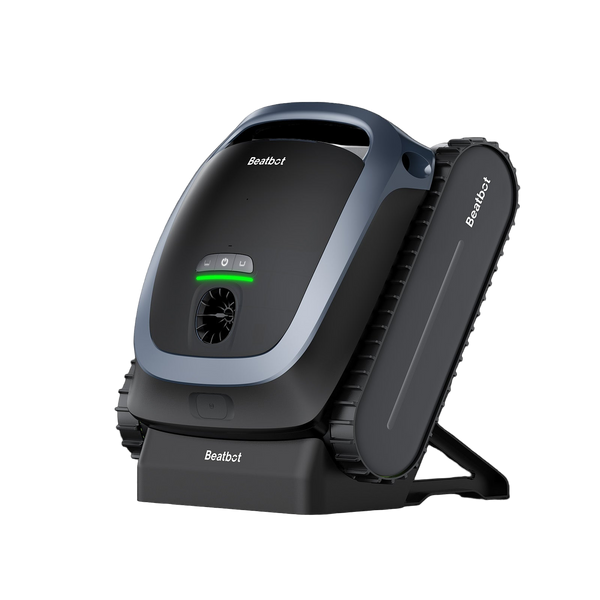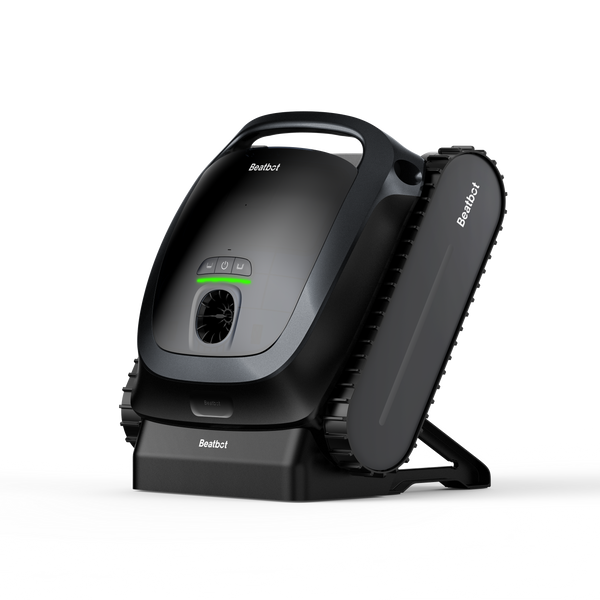How to remove pool skimmer faceplate
Maintaining a swimming pool is crucial for ensuring its longevity and cleanliness. One essential aspect of pool maintenance is the regular inspection and replacement of the pool skimmer faceplate. The skimmer plays a vital role in keeping your pool clean by trapping debris. Over time, the faceplate may need replacement or cleaning to ensure the skimmer works efficiently. In this comprehensive guide, we'll walk you through the process of removing a pool skimmerfaceplate safely and effectively.
Table of content

Importance of Removing a Pool Skimmer Faceplate
Before diving into the steps, it's essential to understand why this task is crucial. A skimmer faceplate can get damaged over time due to constant exposure to water, chemicals, and varying weather conditions. Signs like cracks, leaks, corrosion, and rust indicate it's time for a replacement. Neglecting these signs can lead to inefficient debris removal, water loss, and potential damage to the pool's structural integrity.
What Tools Do You Need?
Removing a pool skimmer faceplate might seem daunting, but with the right tools and safety gear, it becomes a manageable task. Here's what you'll need:
- Basic Tools: Screwdriver (flathead or Phillips), pliers, putty knife, bucket, old towels.
- Safety Gear: Gloves, safety glasses, knee pads.
Having these tools and safety gear at hand ensures you can perform the task safely and efficiently.
How to Prepare for the Removal Process?
- Turn Off Equipment: Before starting, make sure to turn off all pool equipment, including the pool pump, heater, and any other connected devices. This step is crucial for safety and to prevent electrical issues.
- Drain Water: Lower the water level below the skimmer opening using a submersible pump or a siphon hose. Draining the water makes it easier to access the skimmer faceplate without water interference.
What are the Steps for Removing the Faceplate?
- Loosen Screws: Locate the screws on the faceplate that hold it in place. Using a screwdriver, turn them counterclockwise gently to avoid stripping. Once loosened, keep the screws in a safe place.
- Detach Faceplate: After loosening the screws, gently pull the faceplate away from the skimmer. If it feels stuck, wiggle it gently to loosen it further. Be cautious not to force it, as this can break the faceplate. Once detached, inspect both the faceplate and skimmer for any debris or grime and clean them accordingly.
What Should You Do After Removing the Faceplate?
After successfully removing the skimmer faceplate, it's crucial to follow these post-removal steps:
- Inspect For Damage: Check the faceplate and skimmer housing for any cracks, chips, or wear. If any damage is found, replace the damaged parts immediately to avoid future issues.
- Clean Area: Clean the area around the skimmer to remove any accumulated debris or dirt. Use a soft brush to gently clean the surface around the skimmer opening, removing any algae or dirt buildup.

Why Might You Need To Replace a Skimmer?
Over time, skimmers can degrade due to constant exposure to water, chemicals, and varying weather conditions. Signs indicating a replacement is necessary include visible damage like cracks or crumbling surfaces, corrosion and rust, leaks leading to water loss, and ineffective debris removal due to clogs or a malfunctioning mechanism.
How To Prevent Skimmer Problems In The Future?
To prevent future skimmer problems, establish a regular cleaning routine, maintain proper chemical levels in the pool, and regularly clean the filter to ensure optimal water circulation. Additionally, monitor and inspect your water level, skimmer line, lid, and lid seal to ensure everything functions efficiently.
In conclusion, removing and replacing a pool skimmer faceplate is an essential task for pool owners. By following this comprehensive guide, you can ensure your pool remains clean and functional, prolonging the life of your pool equipment. Remember, maintaining the right conditions for your pool equipment is key to preventing future problems.
Types of Pool Covers: Pros and Cons
When it comes to pool maintenance, choosing the right cover can make all the difference. There are primarily two types of pool covers to consider: mesh and solid. Each offers distinct benefits, as well as a few drawbacks.
Mesh Pool Covers
Advantages:
- Durability: Mesh covers are known for their robustness, offering long-term usage without frequent replacements.
- Easy Installation: Setting up a mesh cover is straightforward, reducing the time and effort required.
- No Pump Needed: Unlike some other options, these covers naturally allow water to drain, eliminating the need for a pump.
Disadvantages:
- Dirt and Sediment: While they keep larger debris out, fine dirt and sediment can still seep through.
- Algae Growth: Since they allow some sunlight to penetrate, mesh covers may encourage algae growth, requiring extra pool cleaning upon reopening.
Solid Pool Covers
Advantages:
- Debris Protection: These covers excel at keeping out all types of debris, ensuring your pool remains clean.
- No Algae Issues: By blocking sunlight, solid covers prevent algae from growing, maintaining water quality over time.
Disadvantages:
- Higher Cost: Solid covers tend to be more expensive than their mesh counterparts.
- Shorter Lifespan: They generally don’t last as long, meaning you might face more frequent replacements.
- Pump Requirement: To prevent water accumulation, you will need a submersible pump, adding to maintenance efforts.
Choosing between these pool covers depends on your specific needs and budget, as each offers a unique set of advantages and challenges.
The Benefits of Using a Pool Cover
When it comes to maintaining a pool, especially as temperatures drop, utilizing a pool cover offers numerous advantages that can enhance both the longevity and cleanliness of your pool. Whether you own an in-ground or above-ground pool, a cover is essential for several reasons.
Keeps Your Pool Clean
One of the primary benefits of a pool cover is its ability to protect your pool from accumulating dirt and debris. This means less work for you when it's time to reopen the pool after the off-season. By acting as a barrier, pool covers help maintain a cleaner swimming environment.
Reduces Evaporation
During periods when the pool is not in use, water and chemicals can evaporate, leading to inconsistent levels and increased maintenance. A pool cover serves to minimize evaporation, preserving your pool's resources and saving you time and money on refilling and chemical adjustments.
Maintains Water Temperature
A pool cover can significantly contribute to retaining heat, which is particularly beneficial in cooler climates. By maintaining a more consistent water temperature, you can save on energy costs associated with heating your pool and enjoy a more comfortable swim when reopening.
Types of Pool Covers
Mesh Covers
-
Advantages :
- Durable and long-lasting
- Easy installation
- Eliminates the need for a pump
-
Considerations :
- May allow dirt and sediment through
- Requires additional maintenance upon reopening
- Sunlight penetration can lead to algae growth
Solid Covers
-
Advantages :
- Keeps out debris and fine sediment
- Prevents algae growth, keeping water cleaner
-
Considerations :
- Shorter lifespan compared to mesh
- Higher cost
- Requires a submersible pump
By choosing the right type of cover for your needs, you'll ensure that your pool remains clean, energy-efficient, and in excellent condition until it's time to enjoy it again.
Relative Blogs
About the author



















